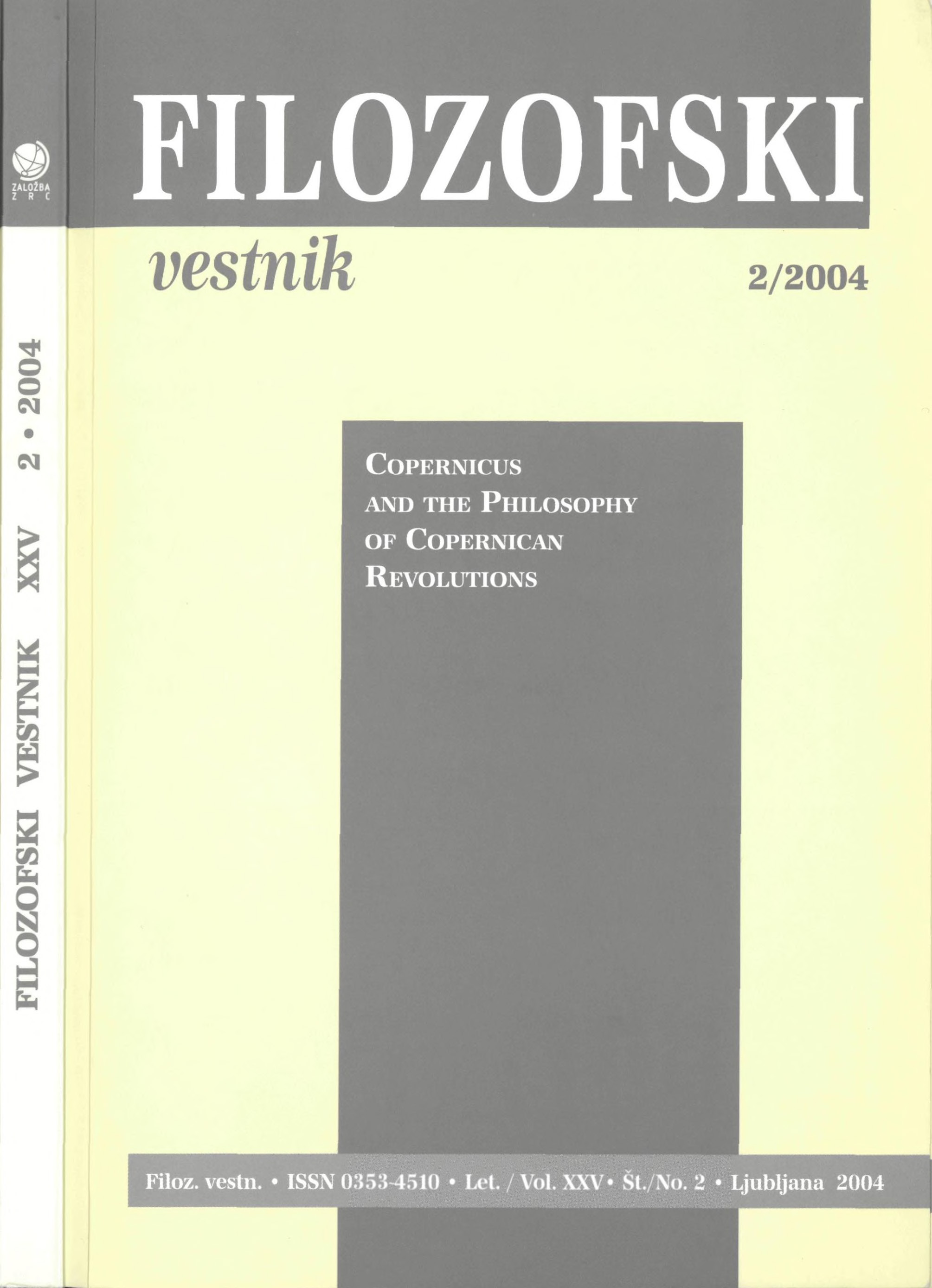Giordano Bruno’s Copernican Diagrams
Povzetek
The paper considers the Copernicanism of Giordano Bruno (1548–1600) as a central moment of his philosophy of nature, concentrating on his two principal cosmological works, La cena de le ceneri (The Ash Wednesday Supper), written and published in London in 1584, and the Latin De immenso, published in Frankfurt in 1591. The principal characteristic of Bruno’s reading of Copernicus which is underlined is his physical realism, which was particularly complex due to his extension of the still finite Copernican cosmology to infinite dimensions. The paper shows how Bruno’s use of diagrams was essential in defining the terms of his new infinite, post-Copernican cosmology, which constitutes an essential if much debated link between Copernicus himself and the great astronomers of the early seventeenth century such as Kepler and Galileo.Prenosi
Podatki o prenosih še niso na voljo.
Prenosi
Objavljeno
2007-01-01
Kako citirati
Gatti, H. (2007). Giordano Bruno’s Copernican Diagrams. Filozofski Vestnik, 25(2). Pridobljeno od https://ojs.zrc-sazu.si/filozofski-vestnik/article/view/3199
Številka
Rubrike
Copernicus and the Philosophy of Copernican Revolutions
Licenca
Avtorji jamčijo, da je delo njihova avtorska stvaritev, da v njem niso kršene avtorske pravice tretjih oseb ali kake druge pravice. V primeru zahtevkov tretjih oseb se avtorji zavezujejo, da bodo varovali interese založnika ter da bodo povrnili morebitno škodo.
Podrobneje v rubriki: Prispevki





